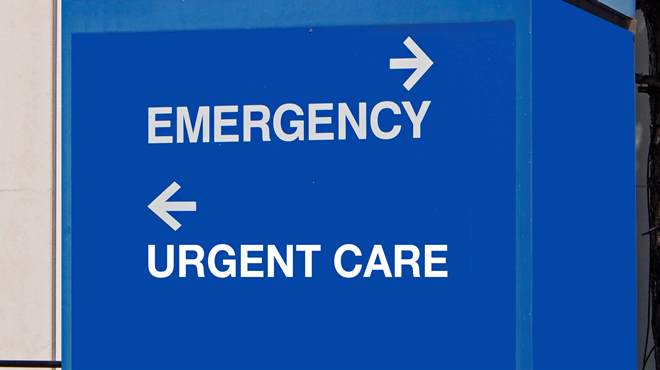Understanding When to Go To Urgent Care for Non-Emergency Health And Wellness Issues
Understanding When to Go To Urgent Care for Non-Emergency Health And Wellness Issues
Blog Article
Understanding the Significance of Urgent Care Providers for Non-Life-Threatening Medical Issues
The value of immediate care services for non-life-threatening medical issues can not be overstated, particularly in today's medical care landscape. These centers supply a necessary alternative for patients seeking prompt interest for conditions that need immediate treatment however do not warrant a visit to the emergency situation area. By recognizing the benefits of immediate treatment, such as reduced delay times and expense efficiency, one can much better appreciate their function in person wellness monitoring. Yet, the subtleties of exactly how to browse these services successfully stay to be checked out, questioning concerning their optimum utilization.
What Is Urgent Care?
Urgent treatment refers to a group of clinical solutions made to deal with non-life-threatening problems that require instant focus yet do not call for a check out to the emergency space. These facilities offer a bridge between health care and emergency solutions, using obtainable health care options for individuals experiencing acute clinical problems, such as minor cracks, strains, infections, or extreme health problems that occur unexpectedly.

The extent of solutions supplied by urgent care facilities can differ but usually consists of therapy for common disorders like colds, flu, and allergic reactions, as well as minor injuries (urgent care). Additionally, many immediate care facilities supply preventative services, such as inoculations and physical examinations, to deal with wider health needs. By supplying a convenient option for urgent clinical concerns, these centers play an important function in the health care continuum, guaranteeing that clients get ideal treatment when they require it most
Benefits of Urgent Treatment Solutions
Numerous people find that using immediate care services provides considerable benefits over conventional emergency clinic sees or waiting on a medical care visit. One primary advantage is the minimized delay times. Immediate treatment facilities usually have shorter wait durations, allowing people to get prompt clinical focus when they need it most. This expedited care is particularly useful for non-life-threatening problems that require timely intervention.
One more advantage is the extensive hours of procedure. Several immediate treatment facilities are open evenings and weekend breaks, accommodating individuals who might not be able to see their main care doctor throughout normal office hours. This adaptability makes it less complicated for people to access care at their comfort.
Additionally, immediate care solutions usually supply an affordable option to emergency clinic. Clients frequently encounter reduced co-pays and general expenses when seeking therapy for minor conditions at immediate treatment facilities as opposed to healthcare facility emergency divisions.
Finally, urgent care centers are geared up to deal with a variety of non-life-threatening concerns, offering a wide series of solutions under one roof. This thorough method not just simplifies the treatment process but also boosts person contentment by supplying effective and timely treatment.
Common Conditions Dealt With
What types of non-life-threatening conditions can individuals expect to receive therapy for at urgent treatment? Immediate treatment facilities are outfitted to handle a broad variety of common clinical concerns that call for punctual focus yet do not position an immediate threat to life. These facilities frequently treat problems such as minor cracks, sprains, and stress, supplying crucial look after injuries that occur pop over to this site throughout day-to-day tasks or sports.
Additionally, individuals often seek treatment for respiratory system infections, consisting of colds, flu, and bronchitis, where timely treatment can reduce signs and symptoms and stop complications. Skin disease such as rashes, insect bites, and small burns are additionally frequently dealt with, as prompt care can alleviate discomfort and decrease the threat of infection.

Contrasting Urgent Treatment and Emergency Situation Spaces

One considerable distinction waits times; urgent care facilities generally have much shorter wait times contrasted to emergency rooms, which can be congested with even more critical instances. This effectiveness permits patients to receive timely therapy for their ailments.
From an economic point of view, immediate treatment brows through tend to be less expensive than emergency room check outs. Insurance copays and out-of-pocket costs are commonly lower at immediate treatment centers, making them a much more affordable option for non-emergency situations.
Just How to Choose an Urgent Care Center
Selecting the ideal urgent care center can dramatically enhance the high quality of treatment gotten during a non-life-threatening clinical concern. When picking an urgent care facility, numerous essential aspects ought to be taken into consideration.
First, evaluate the center's certification and licensing. Seek centers that are accredited by identified companies, as this suggests adherence to quality criteria. Next, assess the variety of services offered. Some immediate treatment centers concentrate on specific locations, while others supply thorough care for various medical problems.
Furthermore, take Learn More into consideration the location and hours of procedure. A conveniently located center with extended hours can be essential for timely treatment. It's also recommended to inspect the facility's delay times and client reviews, which can supply insights right into the overall client experience.
Conclusion
In conclusion, immediate treatment services play an important role in dealing with non-life-threatening clinical concerns effectively. Ultimately, recognizing the importance of immediate care centers adds to improved health care management and client fulfillment.
 By using a convenient option for urgent clinical issues, these facilities play an important duty in the health care continuum, making sure that people receive proper treatment when they need it most.
By using a convenient option for urgent clinical issues, these facilities play an important duty in the health care continuum, making sure that people receive proper treatment when they need it most.Many individuals discover that making use of urgent care services provides considerable benefits over standard emergency space sees or waiting for a main treatment appointment. Numerous urgent care facilities are open nights and weekend breaks, suiting individuals that may not be able to see their primary treatment doctor throughout normal workplace hours. Immediate treatment facilities are developed to resolve non-life-threatening problems, such as small cracks, infections, and diseases, offering a hassle-free alternative to emergency situation rooms for those in demand of instant care. Some urgent care centers specialize in particular locations, while others offer extensive care for various medical issues.
Report this page